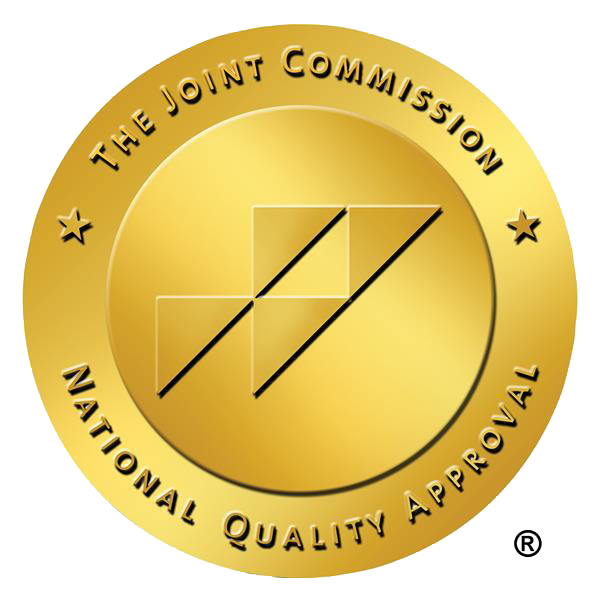Everyone experiences anxiety in some form. It is a normal part of daily life, and the likes of family issues, money problems, and changes in health can bring about anxious feelings. Yet, this generally only causes temporary fear or worry. When someone suffers from an anxiety disorder, those feelings don’t go away, and they can even deteriorate over time.
Anxiety disorders have the ability to negatively impact regular daily activities. This can include major points such as relationships and relatively minor ones like answering the phone. Anxiety disorders come under various categories, including generalized anxiety disorder, social anxiety disorder, and separation anxiety.
Although excessive anxiety can be crippling for work, education, and other social situations, treatment is available to help those battling anxiety disorders.
What Is an Anxiety Disorder?
An anxiety disorder is classed as a mental health condition. Those who suffer from severe anxiety can struggle to complete daily chores and make it through the day. Fear, panic, and nervousness are some of the common symptoms of anxiety. Physical symptoms can also crop up. This includes sweating and a rapid heartbeat.
Some anxiety isn’t just normal, but it can also be beneficial on occasion. It can help with identifying dangerous situations and allowing someone to focus their attention, ensuring they remain safe. However, regular nervousness and temporary fear aren’t what is experienced by those dealing with anxiety disorders. An anxiety disorder can leave someone:
- Unable to function correctly
- Powerless to control their responses to situations
- Overreacting when their emotions are triggered
Common Anxiety Symptoms
There are various symptoms of anxiety disorders. The most prevalent is a high level of fear or worry. Yet that’s only scratching the surface in terms of anxiety symptoms. To highlight that point, here is an assortment of common symptoms that come from anxiety disorders:
- Excessive fear, panic, and uneasiness
- Inability to remain calm and still
- Shortness of breath
- Continual feelings of danger, doom, and panic
- A struggle to maintain a regular sleep schedule
- Hands or feet that are numb, tingling, sweaty, or cold
- Heart palpitations
- Tense muscles
- Dizziness and nausea
- Dry mouth
- Unable to concentrate
- Obsessive in avoiding places or objects that are feared
- Continually thinking about a problem again and again without being able to stop (rumination)
- Breathing that ramps up in terms of speed and quickness (hyperventilation)
The specific symptoms experienced are dependent on the anxiety disorder. Someone with a panic disorder, for instance, is likely to have physical symptoms, while phobia-related disorders are often built around mental stress from worry and fear.
Types of Anxiety Disorders
Anxiety is anything but straightforward. This is evidenced by the various types of anxiety disorders. Below is a closer look at the different disorders:
Generalized Anxiety Disorder
A generalized anxiety disorder (GAD) is where a person often experiences a persistent, overbearing feeling of dread or anxiety. This can have a serious effect on how they function in day-to-day life.
People with occasional anxiety will have similar symptoms as those with GAD. Yet whether it is due to stressful life events or worrying about finances, those feelings will eventually go away. Those with GAD will suffer from severe anxiety and dread for months, possibly even years, without respite.
Other symptoms of generalized anxiety disorder include:
- A struggle to concentrate
- Easily fatigued
- Feeling on edge, restless, and irritable
- Trouble sleeping, whether that’s falling or remaining asleep
- Inability to control feelings of worry
- Experience frequent stomach aches, muscle aches, headaches, or other unexplained pains
Panic Disorder
A panic disorder, as the name suggests, leads to a person suffering from regular panic attacks. A panic attack is defined as someone experiencing intense fear, loss of control, or discomfort despite there being no obvious trigger or danger present. Note that if someone does have a panic attack, this could be an isolated incident and not develop into a panic disorder.
Those dealing with a panic disorder are usually fearful of suffering any further panic attacks in the future. As a result, they will try to avoid anything associated with panic attacks – whether that is visiting a specific place, acting out certain behaviors, or experiencing a particular situation. A panic attack can happen on odd occasions across the year. At the other end of the scale, they might occur numerous times a day.
Symptoms of a panic disorder include:
- Not being in control
- Thoughts of impending doom
- Chest pain
- Sweating
- Racing heart
- Tingling or trembling
Social Anxiety Disorder
If someone has an intense fear of being judged and watched by others, this is recognized as social anxiety disorder. They are left so panicked by social situations that the fear seems out of control, and that can stop them from functioning correctly. It can prevent them from attending classes, going to work, and even completing everyday tasks.
For those with a severe social phobia, they may decide to avoid anything that will place them in a social situation. This could include everything from getting a job in a public setting to answering the door for a package. If they do end up in a social situation – whether voluntarily or involuntarily – they are liable to experience the following symptoms:
- Sweating, blushing, or trembling
- Struggle to make or maintain eye contact with other people, particularly those they don’t know
- Strong feelings of self-consciousness, where they’re fearful others are judging them negatively
- Rigid body posture
- Using an overly soft voice to speak
- Stomach aches or the need to go to the toilet
- Racing or pounding heart
Specific Phobias
As highlighted in the next sections, there are various phobia-related anxiety disorders. Let us first cover the most obvious starting point: specific phobias. Also known in some circles as simple phobias, this is where a person has intense anxiety or fear about a specific situation or object – they bring about anxious feelings.
While there are many phobias that can come under this category, here are some of the most common specific phobias:
- Heights
- Spiders, snakes, dogs, and other animals
- Flying
- Needle injections or seeing blood
- Public speaking
- Crowds
Although these are well-known, a specific phobia anxiety disorder can also come from rarer phobias. This includes the fear of vomiting, the ocean, or using public toilets.
Separation Anxiety Disorder
Separation anxiety disorder is often associated with children only. Yet, this disorder is also something that can affect adults. A separation anxiety disorder is when someone is fearful of being separated from certain people in their life. This could be their spouse, children, parents, and so on. The fear is built up because, when they’re not together, they are worried something bad will happen to their loved ones.
Those dealing with separation anxiety disorder are scared to remain on their own. They don’t want to be in a situation where they’re not together with their loved ones. Risk factors of this anxiety can be amplified due to bad dreams. If a person has had a dream where they were separated from their family, the experience might make them want to avoid that happening in reality.
Agoraphobia
Agoraphobia is a mental illness where people suffer from an intense fear of being in a specific place where escape seems difficult, or they’re unable to get help if needed. Those with agoraphobia are afraid of situations such as:
- Standing in a crowd or in a queue
- Within an enclosed space
- Out in an open space
- Using public transportation
- Going outside on their own
The fear these situations cause can result in panic-like reactions and symptoms deemed embarrassing. Due to this, those with agoraphobia will often try to avoid such situations as much as possible. While this may not seem so bad in general, particularly if it’s only about avoiding public transportation or crowds, agoraphobia’s most severe form can result in individuals remaining housebound.
Selective Mutism
Even though it is a rare condition linked to anxiety, it is still worth spotlighting selective mutism. This anxiety disorder is where a person is unable to speak when in certain social situations despite possessing standard language skills.
Selective mutism mostly affects those aged five years or younger, although it can occur in adults. It is typically linked to the following traits:
- Withdrawal
- Fear of social embarrassment
- Extreme shyness
- Temper tantrums
- Clinging behavior
Other anxiety disorders are often diagnosed at the same time as selective mutism.
Medication-Induced Anxiety Disorder
Certain symptoms of anxiety disorders can be triggered due to the influence of medication or drugs. Certain medications are used for mental health conditions, for instance, but they could have side effects that bring about fear or worry.
The same is applicable to the use of drugs. The likes of cocaine, LSD, and alcohol are all linked to causing anxiety to some degree. It’s not just about those consuming these substances, either. The withdrawal process from certain drugs could also be a trigger for anxiety symptoms.
Causes and Risk Factors for Anxiety Disorders
Anxiety disorders are complex. There is no clear roadmap that explains why someone gets this type of condition. However, there are numerous causes and risk factors which can play a large influence.
Anxiety Disorder Causes
There are several causes that can contribute to an anxiety disorder. From genetic and environmental factors to substance abuse, here are some of the most common ones:
- Family tree: It is possible for anxiety to be hereditary. If anxiety runs in someone’s family, there is a higher chance genetics have contributed to their disorder.
- Environmental stress: As for what environmental stress means, this is in reference to stressful events someone has experienced. Being attacked, a family bereavement, childhood neglect, childhood abuse, and witnessing violence are all examples of environmental stress.
- Medical conditions: Certain thyroid, lung, and heart conditions can do one of two things with regard to anxiety. One, they can lead to symptoms similar to those present in anxiety disorders. Two, it could result in anxiety symptoms becoming worse.
- Brain chemistry: Research has been conducted which suggests brain chemistry can be linked to anxiety disorders. If this chemistry is not lined up correctly when controlling emotions and fear, that might support the development of anxiety disorder symptoms.
- Substance misuse or withdrawal: Some drugs are beneficial in decreasing or masking anxiety symptoms. However, alcohol and substance abuse can potentially heighten these symptoms for many people. The same is applicable to the withdrawal from substances. When someone stops taking drugs or alcohol, they might find their anxiety symptoms increase, which is why withdrawal methods should always be supervised and controlled.
Anxiety Disorder Risk Factors
In addition to causes, there are certain risk factors that increase the possibility of developing an anxiety disorder. Certain risk factors can be avoided, while others cannot be changed. Common risk factors include:
- Trauma: Traumatic events enhance the possibility of post-traumatic stress disorder (PTSD). This can lead to panic attacks and the development of panic disorder.
- Childhood abuse: Anxiety disorders that have been developed later in life can be linked to childhood abuse. This could be sexual, physical, or emotional abuse that has proven to be traumatic and cause long-term damage.
- Shyness as a child: If someone was shy as a child, this may have manifested as they have grown older. Withdrawal and shyness around unfamiliar situations during childhood can be problematic, particularly if this shyness hasn’t been phased out as the person enters their teens and adulthood.
- Low self-esteem: It is well-known that low self-esteem intertwines with social anxiety disorder. The less people are comfortable in their own skin, the less likely they’ll be comfortable within social settings.
- Negative life events: Negative life events can support the development of an anxiety disorder. A negative life event could be something such as losing a parent as a child or getting a divorce.
- A history of mental health disorders: If an individual has a separate mental health disorder, this increases the chances of anxiety developing. Other mental health concerns include the likes of depression and body dysmorphic disorder.
Treatment for Anxiety Disorders
If you are suffering from anxiety, the good news is there are ways to treat anxiety disorders. With the right treatment plan, you are able to manage and reduce the symptoms they are experiencing. There are two main forms of treatment: medicine and therapy.
Medicine
There are various anti-anxiety medications available. However, it is important to note each comes with its pros and cons. You should consult your psychiatrist or doctor for advice on which medication would be the best fit for your needs and specific situation.
As you would gather from the name, the first drugs that are usually prescribed are antidepressants. There are several forms of antidepressants, including escitalopram (Lexapro), venlafaxine (Effexor), and duloxetine (Cymbalta).
Aside from antidepressants, other forms of medication could be suggested. One includes beta-blockers. This is a drug for high blood pressure. When you’re experiencing physical anxiety symptoms, a beta-blocker can help you to relax and feel better, particularly if you’re dealing with an anxiety attack. It can reduce troublesome symptoms such as shaking, trembling, and a racing heart.
Therapy
Therapy is one of the most effective, proven methods for treating anxiety disorders. This is particularly the case when someone enrolls on an intensive outpatient sessions (IOS) course. An IOS incorporates different therapy-based treatments, ranging from talk therapy to support groups, to help you face your anxiety, discuss your thoughts and feelings, and come up with strategies and coping techniques for a positive future outlook.
There are four main components of IOS: individual therapy, group therapy, family therapy, and medication management.
- Individual therapy: For any IOS treatment, one of the most critical components is individual therapy. It supplies you with one-on-one support for your anxiety. A trained therapist learns about past trauma, current issues and struggles, and uses this information to locate your anxiety triggers. They’ll also teach you about how to cope with negative thoughts and stress.
- Group therapy: Group therapy is built around bringing others in a similar situation together in a safe, non-judgmental space. By connecting with others that are struggling with anxiety, it shows you are not alone in your journey. Additionally, everyone can share advice and support, building each other up for more effective recovery.
- Family therapy: Family therapy can also play a significant role in IOS treatment. This therapy allows family members to resolve conflicts and learn healthy communication. The result: it creates a more supportive, beneficial home environment for your anxiety treatment.
- Medication management: As medication is regularly used for treating anxiety, management can be a key aspect of IOS. This treatment tracks the effectiveness of the medication you’re taking. The information gained then allows for adjustments to the medicines used or dosage levels when required.
Conclusion
There are many different symptoms of anxiety that are spread across different anxiety types. By identifying your symptoms and which anxiety type they fall under, you have a better idea of what you’re facing.
Then, it’s a case of receiving the right treatment to alleviate your anxiety symptoms. By combining medication and IOS treatment, you have a platform to build from, and it gives you a greater chance of improving your situation and moving forward from your anxiety issues.







